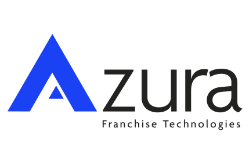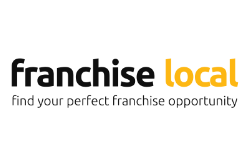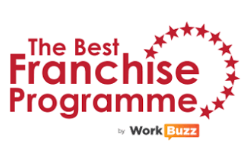There are many myths that swirl around franchising: only big-name franchises are worth the investment; buying into a tried and tested formula always ensures success; and franchise funding is impossible to find. In truth, opportunities exist in lesser known franchise systems; any enterprise can fail without hard work and business know-how; and growth finance is available for franchisees if they know where to look.”
Small business lending on the up
Given the Funding for Lending scheme makes it easier for banks to lend to smaller businesses, its extension until January 2018 is a positive sign for capital-hungry SMEs, including franchises. Likewise, figures from the Bank of England showing that loans to small firms have increased by £2.1bn to October 2015 can only be welcomed. However, this is still far below the levels of lending to small companies before the recession, with franchisees among those to be hit hard by the tightening of credit by the big financial institutions.”
Frustrated potential
Detail about the impact of the economic slump on UK franchises’ borrowing behaviour is hard to find. But where the US leads, we tend to follow and, in 2013, the amount of borrowing available in the States was only about 10% of what was needed by franchises, according to the International Franchise Association. Ironically, this negative lending pattern coincides with a period when franchise numbers have boomed, since periods of rising unemployment typically see more people considering business ownership via franchising. In Britain, the franchise industry’s contribution to the economy grew by 20% between 2008 and 2013 when the overall economy shrank by 2.5%. Demand for lending by franchises inevitably rose at the same time, although this need for finance has too often been frustrated.”
Limiting debt limits growth
This bias seems unjustified since franchise businesses have a better than average chance of making money: according to the British Franchise Association, almost half are quite or very profitable and 92% are at least marginally in profit. As a lender, we tend to favour those industries that are well-populated by franchise operations and which many conventional lenders snub as being too risky. These include food and hospitality, automotive, and the services sector. Businesses that operate as franchises in these less popular fields can find themselves doubly disadvantaged, even when approaching banks with specialist franchise lending teams.”
Since these enterprises’ opportunity to borrow has been restricted, so has their ability to expand or hire, and some have been forced to downsize. Against this gloomy backdrop, some business owners’ attitudes towards borrowing have also suffered. The latest SME Finance Monitor from BDRC Continental shows that about half of all SMEs qualify as ‘permanent non-borrowers’, shunning any form of credit. This increasing fear of debt really matters, since evidence has repeatedly shown that under-capitalised companies not only grow less quickly and can be overtaken by competitors but can also be in greater danger of collapse.”
The changing lending landscape
But there are reasons for hope. Most notably, more SMEs are learning that new sources of funding do exist, including alternative finance providers. This new breed of lender has grown out of the recent funding crisis and has been fuelled by the development of digital platforms that are open to all, as well as algorithms enabling speedy decision-making on loan applications. Since the banks have curbed their appetite to lend, others have emerged to fill the funding gap and the nature of business finance has been changed irrevocably in the process.”
In recent years, funding choices have proliferated for those running franchises. Some will still look to their bank first, while independent specialist franchising lenders are also practised in helping those in the industry. Asset finance and leasing arrangements are other familiar ways for franchisees to invest in their operation. However, innovative alternative funders are on the rise. For example, as indicated by the SME Finance Monitor, more than a third of small or medium-sized businesses seeking borrowing has heard of crowdfunding. This reflects a growing awareness of alternative finance among business owners and franchisees, as small firms discover the possibilities offered by peer-to-peer borrowing, invoice finance and short-term, unsecured lenders.
Greater choice boosting confidence
Franchise businesses need money for many things, whether that’s investment in the franchise licence, startup expenses including stock, marketing and recruitment costs or extra working capital to survive the early months. All of this comes before the business seeks finance to implement any serious growth plans. It’s worth emphasising that there are lenders and finance providers that do want to do business with franchisees in these positions. Business owners should not be put off their expansion goals from fear that finance will be out of their reach – or fear of borrowing itself.”
Franchising can be a route to business success but it requires investment, which typically means debt of some kind at certain points in a company’s life. But debt in itself is not a bad thing if chosen wisely and the good news is franchisees have more choice today in terms of funding options than ever before. And that’s not a myth; that’s reality.”

Alex Littner
Littner certainly has pedigree when it comes to finance. Currently managing director at Boost Capital, a business funding company, he previously spent eight years at American Express working on its Small Business Card Portfolio across EMEA, Asia-Pacific, Latin America and the Caribbean. Away from work, Littner is a family and football man: he has a two-year-old daughter and an Arsenal season ticket.

Alex Littner
Littner certainly has pedigree when it comes to finance. Currently managing director at Boost Capital, a business funding company, he previously spent eight years at American Express working on its Small Business Card Portfolio across EMEA, Asia-Pacific, Latin America and the Caribbean. Away from work, Littner is a family and football man: he has a two-year-old daughter and an Arsenal season ticket.


































